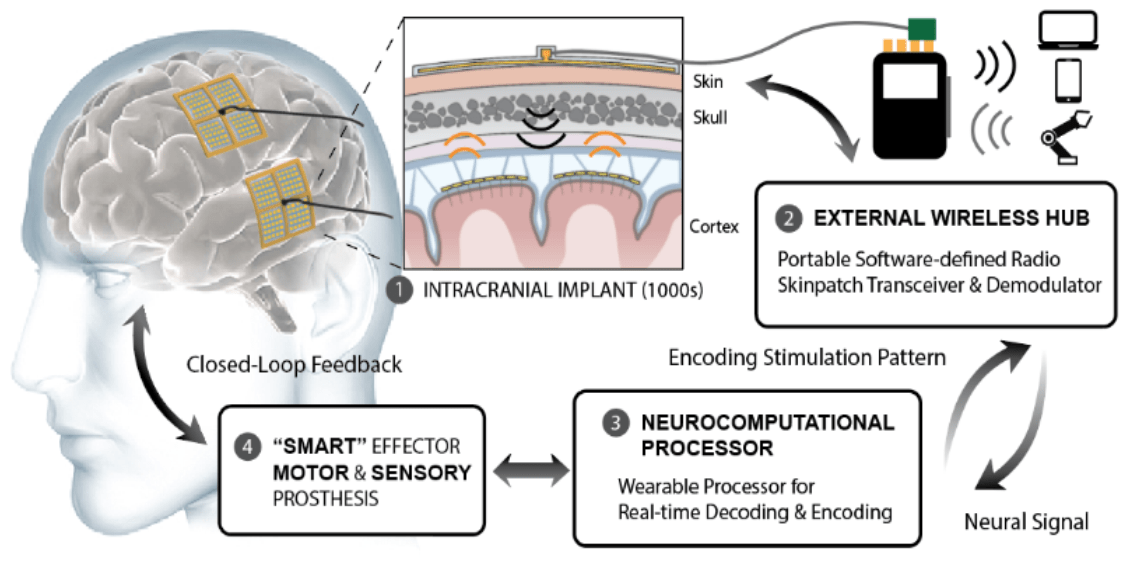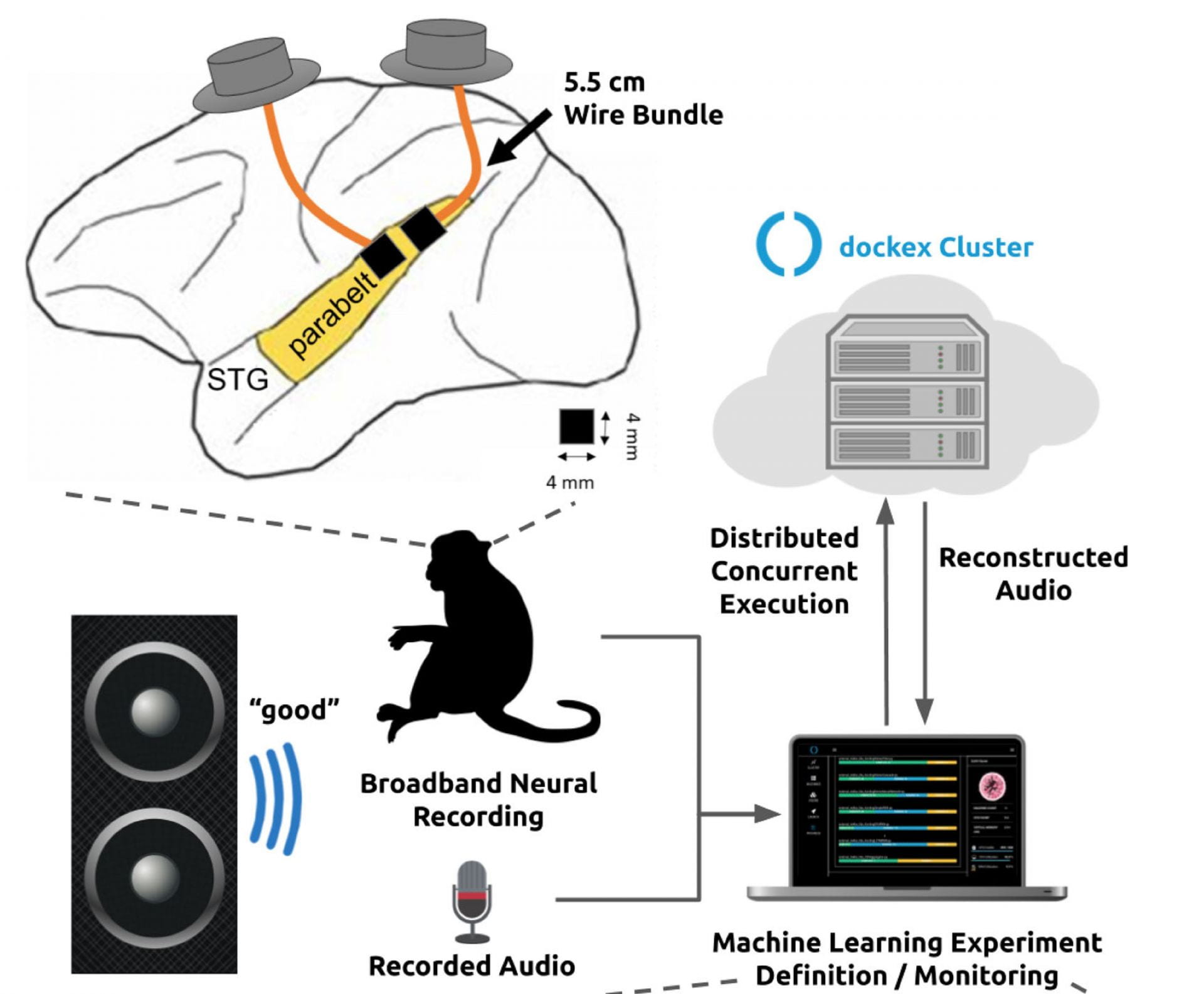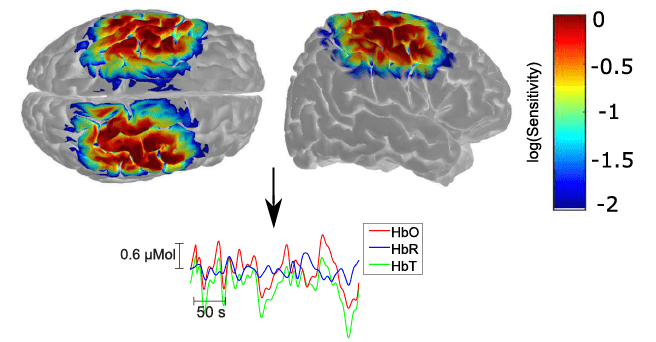
Neurotechnology for Large Scale Cortical Interfaces
The Neurograin project targets the development of next-generation neurotechnology for very large-scale recording and stimulation of distributed brain areas through a wirelessly networked ensemble of completely implantable microdevices. Active areas of research and development in this neurotechnology arena are:
(1) Low-power, Low-noise custom microelectronic circuit design
(2) Wireless Energy Transfer and Telecommunications
(3) Portable Embedded System solutions for real-time Neurocomputational processing
(4) High-throughput hermetic packaging of microdevices

Electronic Interfaces with the Sensory Cortices
Neural population dynamics remain unclear, especially the role of sensory feedback. We are building a wearable wireless implantable neurotechnology system for real-time communication with cortical microcircuits at an unprecedented level of scale and resolution. The approach is based on the concept of spatially distributed, autonomous, implanted microelectronic chiplets, “Neurograins” to connect the cortex wirelessly with the external electronic world. This project aims to first adapt the new technology to studies in non-human primates to understand the dynamics of cortical microcircuits in auditory and tactile sensing. We are pursuing two specific research questions in this area:
(1) Decoding speech from population recordings in secondary auditory cortex
(2) Exploring dynamical coupling between primary somatosensory and motor cortices during active grasping of a soft compliant object

Near-Infrared Imaging of Brain Activity: Development of High-Resolution Capability through Space and Time-resolved Methods
We are currently developing a novel neuroimaging system with functional near-infrared spectroscopy techniques. This project aims to push the current limits of imaging resolution of brain signal carriers (e.g. hemoglobin, neuron) to achieve higher temporal and spatial resolution. The potential applications include portable brain monitoring devices as well as non-invasive brain-computer interfacing.
